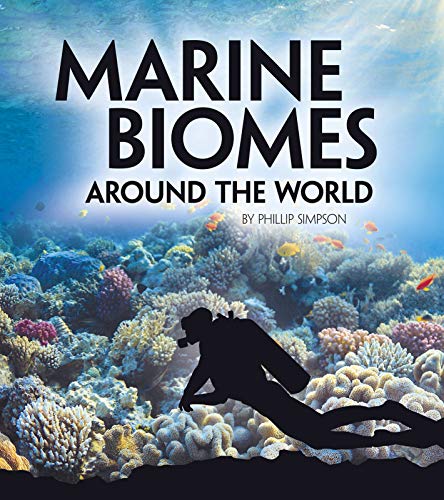-
Grassland Biomes Around the World
Victoria G. Christensen, Phillip Simpson
Paperback (Capstone Press, Aug. 1, 2019)The grassy view of a prairie stretches out forever! Although it only looks that way, large grasslands are found on every continent except Antarctica. The grassland biome may be called by different names, such as savannas or steppes, but they're found all over the globe. Learn about the geography and resources of the grassland biome as well as how animals and people have adapted to and impacted grassland environments. Explore this biome's future and what people can do to help keep it safe. T
T
-
Tundra Biomes Around the World
Phillip Simpson
Paperback (Capstone Press, Aug. 1, 2019)What would happen if the frozen Arctic completely melted? Certain plants and animals rely on the dry and cold tundra environments. The tundra biome includes both the flat regions of the Arctic and the alpine heights of the mountains. This biome holds a source of food and a climate suitable for the plants and animals that live there. Learn about the geography and resources of the tundra biome as well as how animals and people have adapted to and impacted tundra environments. Explore this biome's future and what people can do to help keep it safe. U
U
-
Freshwater Biomes Around the World
Victoria G. Christensen
Paperback (Capstone Press, Aug. 1, 2019)Imagine life on Earth without water. Could you live in such a world? Today, almost all life on Earth relies on water, including plants and animals. The freshwater biome includes lakes, rivers, wetlands, ice, and even water in the ground. This biome holds a source of food, air, and water for plants, animals, and people all over the world. Learn about the geography and resources of the freshwater biome as well as how animals and people have adapted to and impacted freshwater environments. Explore this biome's future and what people can do to help keep it safe. U
U
-
Forest Biomes Around the World
M. M. Eboch
Paperback (Capstone Press, Aug. 1, 2019)It's a full home under the leaves of a forest! From spiders and frogs to deer and bears, the temperate forest biome has just the right shelter and weather for a large variety of plants and animals. Learn about the geography and resources of the temperate forest biome as well as how animals and people have adapted to and impacted forest environments. Explore this biome's future and what people can do to help keep it safe. T
T
-
Desert Biomes Around the World
M. M. Eboch
Paperback (Capstone Press, Aug. 1, 2019)Did you know that Antarctica is the largest desert in the world? It receives so little rain or snow that it is almost as dry as the Sahara! Whether cold, hot, or somewhere in between, a third of Earth's land is part of the desert biome. Learn about the geography and resources of the desert biome as well as how animals and people have adapted to and impacted desert environments. Explore this biome's future and what people can do to help keep it safe. T
T
-
Marine Biomes Around the World
Phillip Simpson
Paperback (Capstone Press, Aug. 1, 2019)Did you know that most of Earth's oxygen comes from the marine biome? The marine biome is the largest biome in the world. This biome includes the five main oceans and is a source of food, air, and water for plants, animals, and people all over the world. Learn about the geography and resources of the marine biome as well as how animals and people have adapted to and impacted marine environments. Explore this biome's future and what people can do to help keep it safe. T
T
-
Temperate Deciduous Forests
April Pulley Sayre
Library Binding (21st Century, Dec. 9, 1997)Introduces the ecology of the temperate deciduous forest, discusses forest weather, climate, and geology, and surveys forest plants and animals Z
Z
-
Marine Biomes Around the World
Phillip Simpson
Library Binding (Capstone Press, Aug. 1, 2019)Did you know that most of Earth's oxygen comes from the marine biome? The marine biome is the largest biome in the world. This biome includes the five main oceans and is a source of food, air, and water for plants, animals, and people all over the world. Learn about the geography and resources of the marine biome as well as how animals and people have adapted to and impacted marine environments. Explore this biome's future and what people can do to help keep it safe. T
T
-
Tundra Biomes Around the World
Phillip Simpson
Library Binding (Capstone Press, Aug. 1, 2019)What would happen if the frozen Arctic completely melted? Certain plants and animals rely on the dry and cold tundra environments. The tundra biome includes both the flat regions of the Arctic and the alpine heights of the mountains. This biome holds a source of food and a climate suitable for the plants and animals that live there. Learn about the geography and resources of the tundra biome as well as how animals and people have adapted to and impacted tundra environments. Explore this biome's future and what people can do to help keep it safe. U
U


